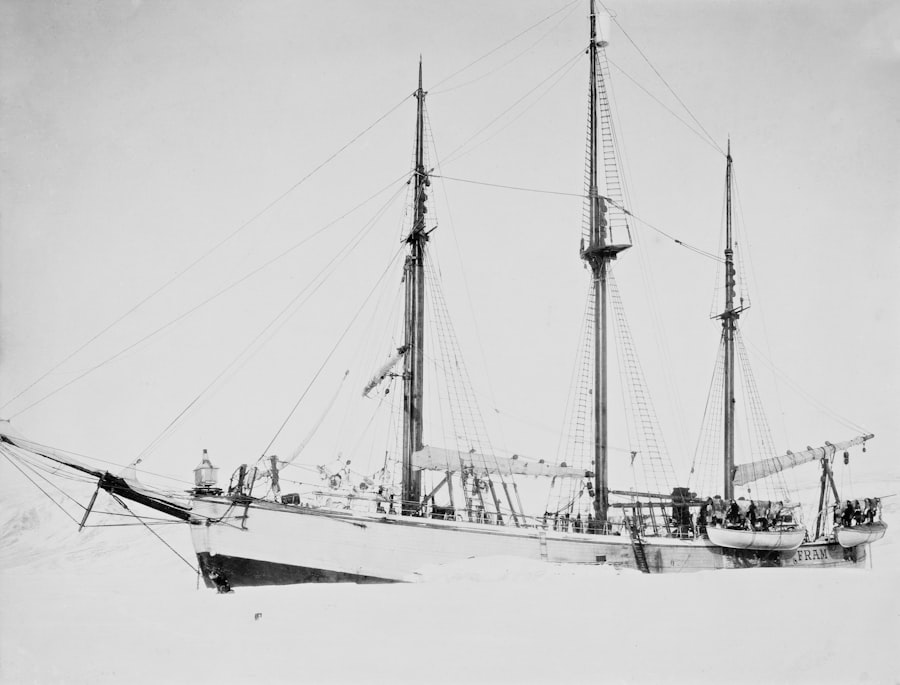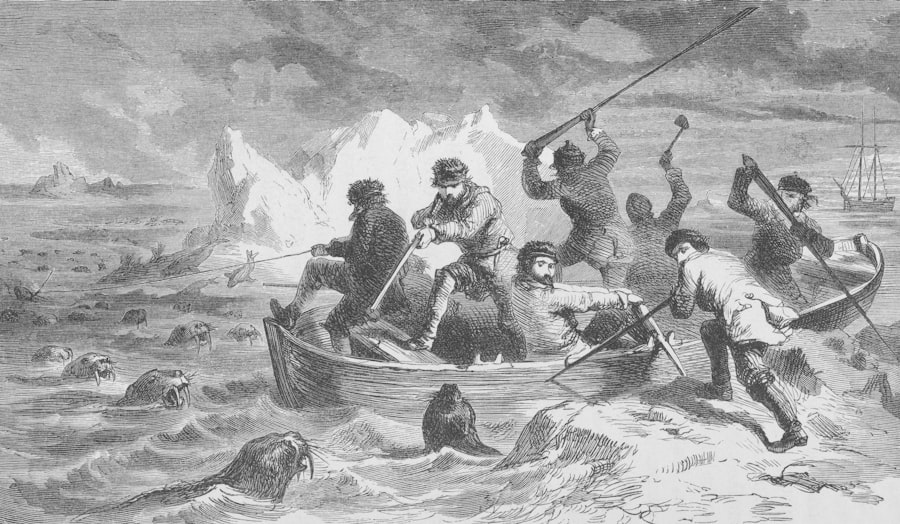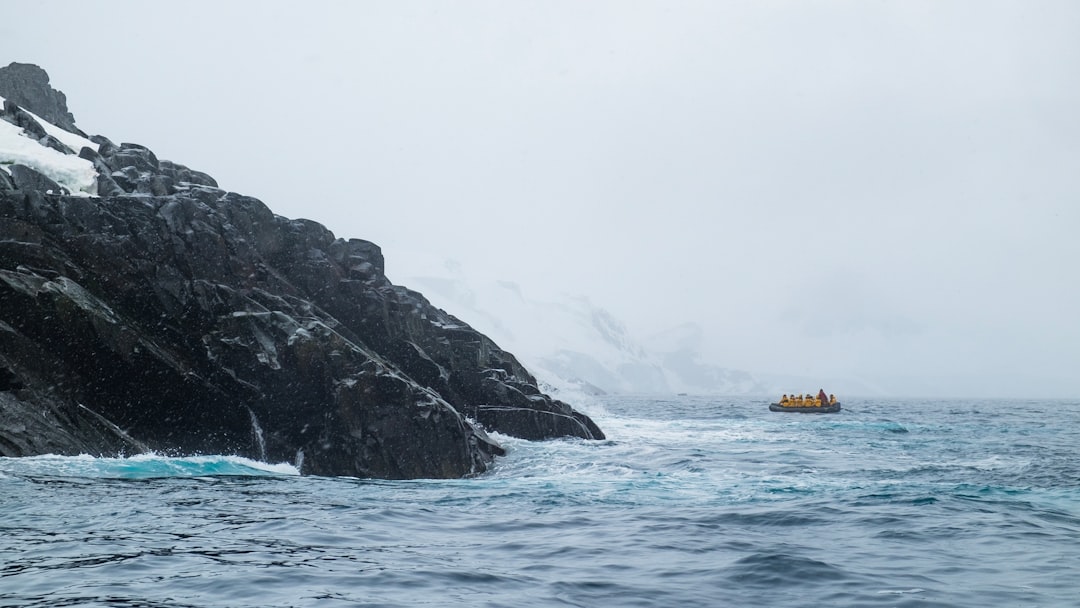The Drake Passage, a body of water that separates South America from Antarctica, is renowned for its tumultuous seas and unpredictable weather. Stretching approximately 600 miles, this passage is often considered one of the most challenging maritime routes in the world. The confluence of the Atlantic and Pacific Oceans creates a unique environment where strong currents and fierce winds converge, resulting in rough waters that can test even the most seasoned sailors.
For those embarking on a journey through this formidable passage, understanding its characteristics is crucial for both preparation and safety. Navigating the Drake Passage is not merely a physical challenge; it also offers an opportunity to witness some of the most breathtaking natural beauty on Earth. The surrounding landscapes are often stark yet stunning, with towering icebergs and the occasional sighting of marine wildlife such as whales and seabirds.
Travelers who venture through this region are often rewarded with unforgettable views and experiences that highlight the raw power of nature. However, it is essential for adventurers to respect the environment and be aware of the ecological significance of this area, as it serves as a critical habitat for various species.
Key Takeaways
- The Drake Passage is a challenging stretch of water between South America and Antarctica known for its rough seas and unpredictable weather.
- When choosing a vessel for the journey, consider factors such as size, stability, and experience of the crew.
- Packing essentials for the Drake Passage include warm clothing, waterproof gear, and seasickness medication.
- Stay informed about weather conditions and follow safety protocols to ensure a safe and comfortable journey.
- Take seasickness precautions such as staying hydrated, getting plenty of fresh air, and choosing a cabin in the middle of the ship.
Choosing the Right Vessel
Selecting the appropriate vessel for a journey across the Drake Passage is paramount to ensuring a safe and enjoyable experience. Various types of ships are available, ranging from large cruise liners to smaller expedition vessels. Each option comes with its own set of advantages and disadvantages, making it essential for travelers to consider their preferences and comfort levels.
Larger ships may offer more amenities and stability in rough waters, while smaller vessels can provide a more intimate experience and greater access to remote locations. When choosing a vessel, it is also important to consider the expertise of the crew and the ship’s design. Modern expedition ships are often equipped with advanced stabilization technology, which can significantly reduce the impact of waves and swells.
Additionally, a knowledgeable crew can enhance the journey by providing insights into the region’s history, wildlife, and geography. Ultimately, selecting the right vessel can make all the difference in how one experiences the challenges and wonders of the Drake Passage.
Packing Essentials

Packing for a trip through the Drake Passage requires careful consideration of both comfort and practicality. Given the unpredictable weather conditions, travelers should prepare for a range of temperatures and conditions. Layering is key; lightweight thermal undergarments, waterproof outer layers, and insulated jackets are essential items that can help keep adventurers warm and dry.
Additionally, sturdy footwear is crucial for navigating wet decks and slippery surfaces on board. Beyond clothing, there are several other essentials that should not be overlooked. A good pair of binoculars can enhance wildlife viewing opportunities, allowing travelers to spot distant whales or seabirds from the deck.
Sunscreen and sunglasses are also important, as UV rays can be intense even in colder climates. Personal items such as medications, toiletries, and a well-stocked first-aid kit should be included in any packing list to ensure that all needs are met during the journey.
Staying Informed about Weather Conditions
| Source | Frequency | Accuracy |
|---|---|---|
| Weather App | Hourly | High |
| Weather Website | As needed | Medium |
| TV/Radio | During severe weather | High |
The weather in the Drake Passage can change rapidly, making it vital for travelers to stay informed about current conditions. Before embarking on their journey, adventurers should familiarize themselves with weather patterns typical of the region. This knowledge can help them anticipate potential challenges and prepare accordingly.
Many vessels provide daily briefings on weather forecasts, which can be invaluable for planning excursions and activities during the trip. In addition to official forecasts, travelers should also be aware of how weather conditions can affect their experience on board. High winds and rough seas may lead to changes in itineraries or delays in planned activities.
By staying informed and flexible, travelers can adapt to changing circumstances and make the most of their time in this remarkable region.
Taking Seasickness Precautions
Seasickness is a common concern for many travelers crossing the Drake Passage, given its notorious reputation for rough waters. To mitigate this issue, it is advisable for individuals to take preventive measures before setting sail. Over-the-counter medications such as antihistamines can be effective in reducing symptoms of motion sickness.
Additionally, travelers may find relief through natural remedies such as ginger or acupressure wristbands. Onboard strategies can also play a significant role in managing seasickness. Staying hydrated, eating light meals, and spending time on deck in fresh air can help alleviate discomfort.
It is also beneficial to focus on stable points on the horizon rather than looking at moving objects within the ship. By being proactive about seasickness, travelers can enhance their overall experience and enjoy their journey through the Drake Passage.
Following Safety Protocols

Safety should always be a top priority when navigating the Drake Passage. All travelers should familiarize themselves with onboard safety protocols before departure. This includes understanding emergency procedures, knowing the location of life jackets, and participating in safety drills conducted by the crew.
Being well-informed about safety measures can instill confidence in passengers and ensure that everyone knows what to do in case of an emergency. Moreover, adhering to safety guidelines during excursions is equally important. Whether participating in zodiac landings or wildlife watching trips, travelers should follow instructions provided by guides to minimize risks.
Wearing appropriate gear and maintaining awareness of one’s surroundings can contribute to a safer experience overall. By prioritizing safety, adventurers can focus on enjoying their journey while minimizing potential hazards.
Engaging in Onboard Activities
A journey through the Drake Passage offers ample opportunities for onboard activities that can enrich the travel experience. Many vessels provide educational programs led by experts in marine biology, geology, or history, allowing passengers to learn more about the unique environment they are traversing. These presentations often include engaging discussions and multimedia presentations that enhance understanding of the region’s significance.
In addition to educational offerings, social activities such as group games or themed nights can foster camaraderie among passengers. Sharing stories and experiences with fellow travelers can create lasting memories and friendships that extend beyond the voyage itself. Engaging in onboard activities not only makes the journey more enjoyable but also helps pass the time during long stretches at sea.
Maintaining a Positive Attitude
Maintaining a positive attitude is essential when embarking on an adventure through the Drake Passage. The unpredictable nature of this region can lead to unexpected challenges, from rough seas to itinerary changes. Embracing these uncertainties with an open mind can transform potential frustrations into opportunities for growth and discovery.
Travelers who approach their journey with enthusiasm are more likely to appreciate the beauty around them and make lasting memories. Moreover, cultivating a positive mindset can enhance interactions with fellow passengers and crew members.
By focusing on the positives—such as breathtaking views or unique wildlife encounters—travelers can create an atmosphere of joy that enriches their overall experience.
Seeking Professional Advice
For those considering a journey through the Drake Passage, seeking professional advice can be invaluable in ensuring a successful trip. Travel agents specializing in polar expeditions can provide insights into various vessels, itineraries, and what to expect during the journey. They can also assist with logistical arrangements such as flights and accommodations before and after the cruise.
Additionally, consulting with experienced travelers who have previously crossed the Drake Passage can offer practical tips and firsthand accounts that enhance preparation efforts. Online forums or travel blogs dedicated to polar exploration often contain valuable information about what to pack, how to manage seasickness, and recommendations for specific vessels or tour operators. By leveraging professional advice and shared experiences, adventurers can embark on their journey with confidence.
Documenting the Journey
Documenting a journey through the Drake Passage allows travelers to capture memories that will last a lifetime. Whether through photography, journaling, or blogging, recording experiences provides an opportunity for reflection and storytelling long after returning home. Capturing stunning landscapes or unique wildlife encounters not only preserves memories but also allows others to share in the adventure.
In addition to personal documentation, many travelers find joy in sharing their experiences with friends and family through social media platforms or travel blogs. This not only keeps loved ones informed but also inspires others who may be considering similar journeys. By documenting their adventures, travelers contribute to a broader narrative about exploration and appreciation for some of Earth’s most remote regions.
Reflecting on the Experience
As travelers complete their journey through the Drake Passage, taking time to reflect on their experiences is essential for personal growth and appreciation of what they have encountered. Reflecting on challenges faced during rough seas or moments of awe while observing wildlife can deepen one’s understanding of both nature’s power and beauty. This introspection often leads to newfound perspectives on adventure travel and environmental conservation.
Moreover, sharing reflections with fellow passengers or friends back home can foster meaningful conversations about shared experiences and lessons learned during the voyage. These discussions may inspire others to embark on their own adventures or encourage them to appreciate nature’s wonders more deeply. Ultimately, reflecting on a journey through the Drake Passage not only solidifies memories but also cultivates a lasting connection to one of Earth’s most extraordinary regions.
Navigating the treacherous waters of the Drake Passage can be a daunting experience for even the most seasoned travelers. For those looking to embark on this challenging journey, it’s essential to be well-prepared and informed. An insightful article that complements the topic of surviving the Drake Passage can be found on MyGeoQuest. This article provides valuable tips and insights into what travelers can expect when crossing this notorious stretch of water. For more information, you can read the related article on MyGeoQuest by visiting this link.
WATCH NOW! Drake Passage: Earth’s Deadliest Waters Revealed
FAQs
What is the Drake Passage?
The Drake Passage is the body of water between the southern tip of South America and the northern tip of the Antarctic Peninsula. It is known for its rough seas and challenging sailing conditions.
Why is the Drake Passage so dangerous?
The Drake Passage is considered one of the most treacherous stretches of water in the world due to its strong winds, powerful currents, and unpredictable weather patterns. These factors can create extremely rough seas and challenging sailing conditions.
How can one survive the Drake Passage?
To survive the Drake Passage, it is important to be prepared for rough seas and adverse weather conditions. Travelers should take necessary precautions, such as securing personal belongings, wearing appropriate clothing, and following safety instructions provided by the crew.
What are some tips for surviving the Drake Passage?
Some tips for surviving the Drake Passage include staying well-hydrated, getting plenty of rest, and taking motion sickness medication if needed. It is also important to follow the instructions of the ship’s crew and to stay informed about weather conditions.
What should I pack for a journey through the Drake Passage?
When preparing for a journey through the Drake Passage, it is important to pack warm, waterproof clothing, including a good quality jacket, pants, and sturdy footwear. Other essential items include sunscreen, sunglasses, a hat, and any necessary medications.
